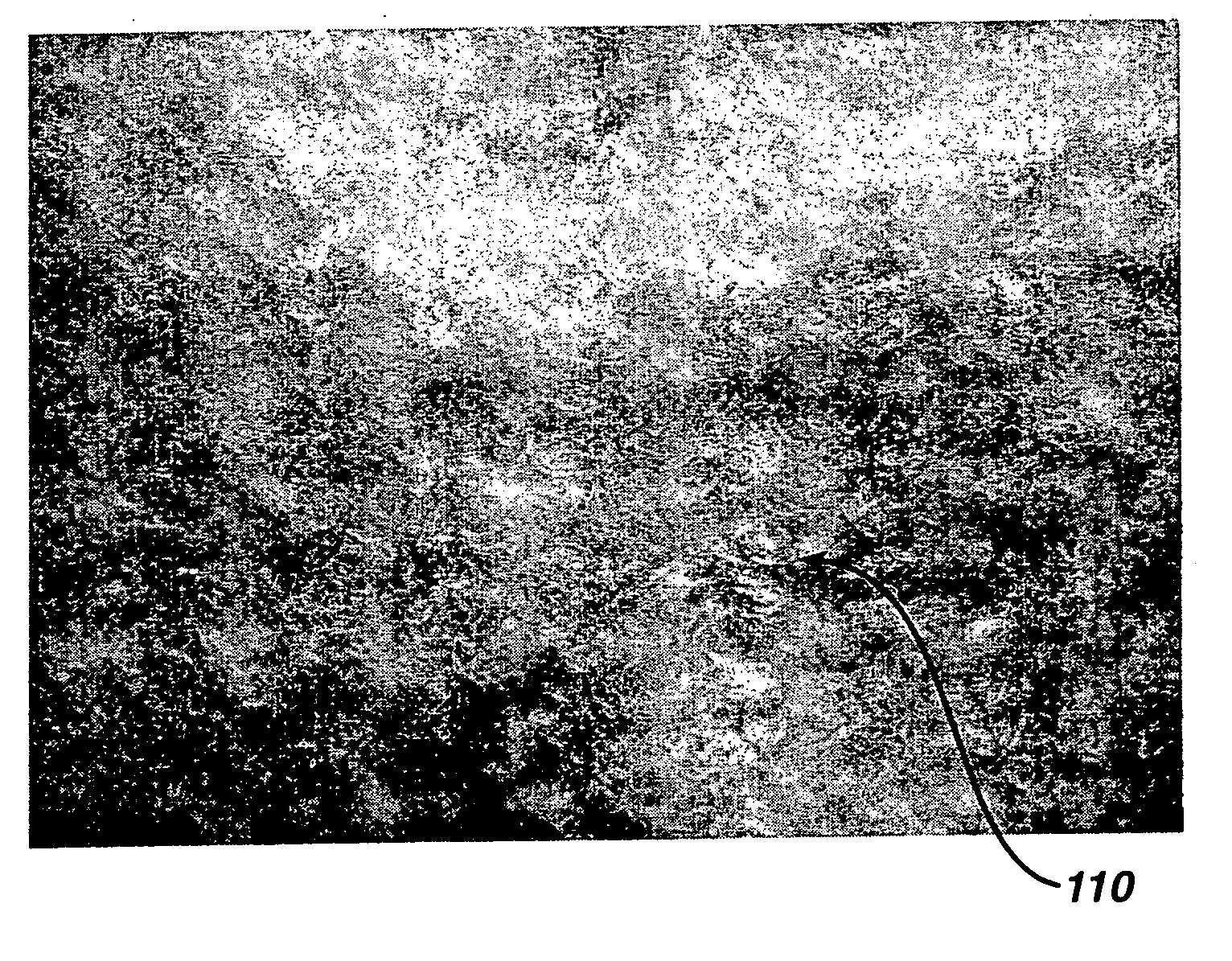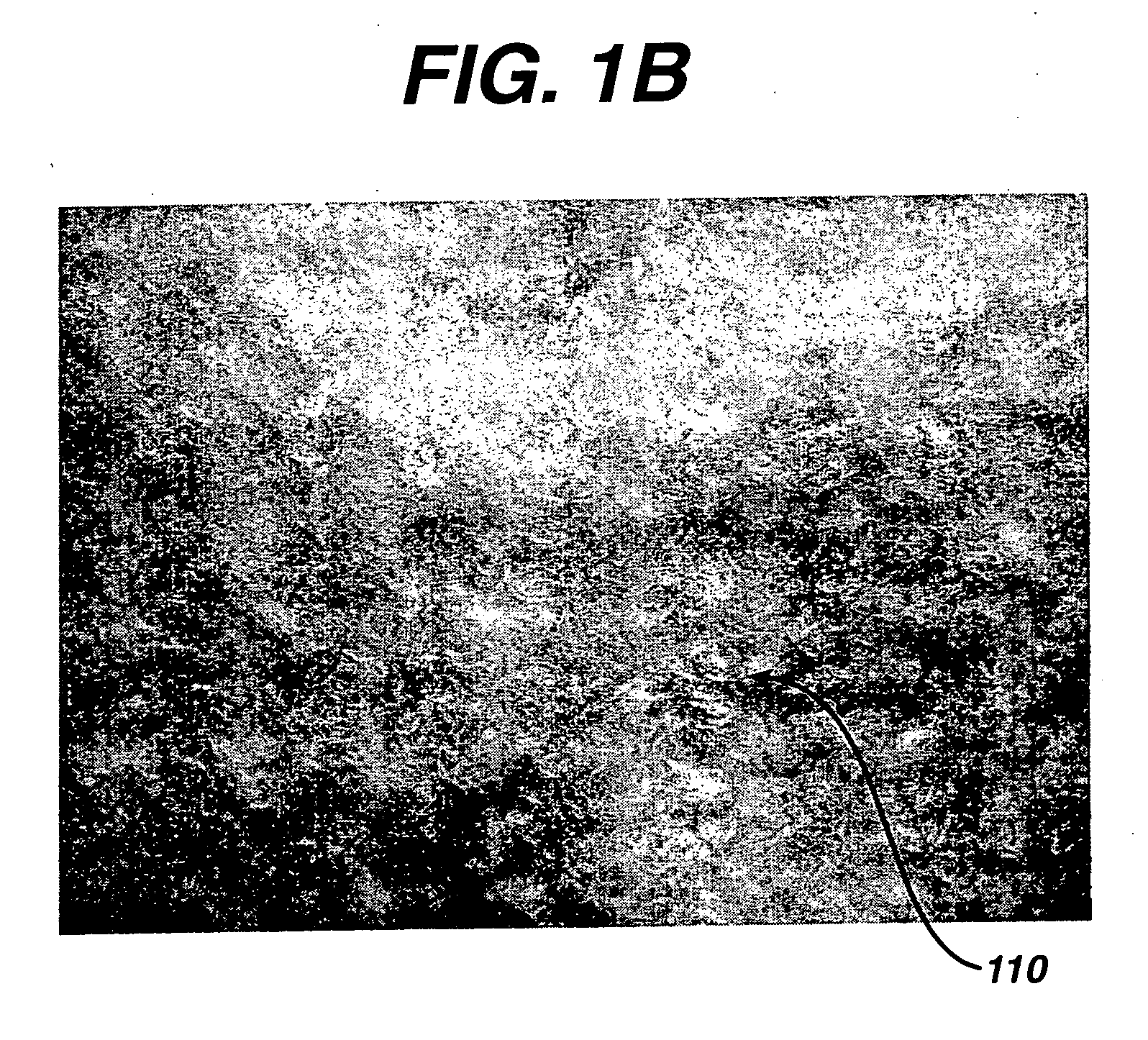Low-density, non-woven structures and methods of making the same
a non-woven structure, low-density technology, applied in the direction of bandages, weaving, synthetic resin layered products, etc., can solve the problems of lack of cushioning feel and/or exfoliating properties, and achieve the effect of low density and high drapeability
- Summary
- Abstract
- Description
- Claims
- Application Information
AI Technical Summary
Benefits of technology
Problems solved by technology
Method used
Image
Examples
example 1
[0062] In each of the following examples 1A-1H, a thin layer of fibers was placed on an 80-mesh metal screen on a rotating drum. The fibers were a blend of 70% polyester and 30% rayon having a basis weight of 65 gsm. The drum was rotated to move the layer of fibers at a linear speed of 150 fpm. All samples were subject to an initial stabilization treatment in which water was urged though each of a number of 0.005-inch diameter jets at 700 psi. The jets were in oriented perpendicularly to the layer of fibers and arranged in a row of spaced to a jet density of 30 jets / inch. The drum was allowed to rotate completely 6 times, thus allowing a given point on the layer of fibers to pass through the row of jets 6 times. Thickness was measured as described below. For certain of the examples, as indicated, an additional high pressure “bulking” treatment was performed after the stabilizing treatment. The jets (otherwise same as above) were placed at an angle of 20 degrees to the normal, either...
example 1b
[0067] After the stabilizing treatment, a bulking water treatment was performed at a pressure of 2100 psi and with jets tilted in the machine-forward direction. After the treatment, the web had a thickness of 1.68 mm and a density of 0.039 g / cm3. The web tensile strength in machine direction was determined to be 29.7 N / 5 cm. The web tensile strength in cross-machine direction was determined to be 18.9 N / 5 cm.
example 1c
[0068] After the stabilizing treatment, a bulking water treatment was performed at a pressure of 1500 psi and tilted in the machine-forward direction. After the treatment, the web had a thickness of 1.80 mm and a density of 0.036 g / cm3. The web tensile strength in machine direction was determined to be 24.9 N / 5 cm. The web tensile strength in cross-machine direction was determined to be 13.4 N / 5 cm.
PUM
| Property | Measurement | Unit |
|---|---|---|
| density | aaaaa | aaaaa |
| density | aaaaa | aaaaa |
| density | aaaaa | aaaaa |
Abstract
Description
Claims
Application Information
 Login to View More
Login to View More - R&D
- Intellectual Property
- Life Sciences
- Materials
- Tech Scout
- Unparalleled Data Quality
- Higher Quality Content
- 60% Fewer Hallucinations
Browse by: Latest US Patents, China's latest patents, Technical Efficacy Thesaurus, Application Domain, Technology Topic, Popular Technical Reports.
© 2025 PatSnap. All rights reserved.Legal|Privacy policy|Modern Slavery Act Transparency Statement|Sitemap|About US| Contact US: help@patsnap.com



